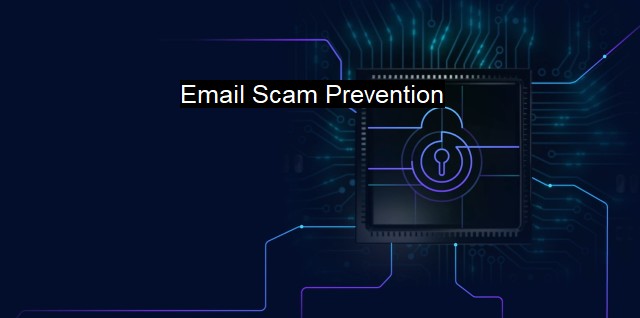What is Email Scam Prevention?
Enhancing Cybersecurity: The Importance of Developing Awareness and Strategies to Prevent Email Scams and Data Breaches
Email scam prevention is a crucial aspect of cybersecurity and antivirus systems, aimed at reducing the frequency, intensity, and impact of fraudulent activities carried out via emails. Email scams are malicious activities intended to deceive email recipients and lure them into sharing sensitive information such as bank details, personal identification data, and passwords. they may attempt to make transactions or install malware on victims' computers for ulterior motives.The term "Email Scam Prevention" refers to methods and techniques used to prevent these email scams from being persistently successful, to maintain the integrity of email communication. As almost everyone using a computer resorts to emails to communicate personally or professionally, the need for robust, well-integrated email scam prevention measures is irrefutable.
Cybersecurity and antivirus systems carefully incorporate different sections to handle email scam prevention, reflecting how important, intricate, and multi-faceted this task is. At the core of prevention methods lies the method of identifying potential scam emails and stopping them from reaching the intended recipient's inbox. Cybersecurity systems often use complex algorithms and pattern recognition mechanisms to flag scam emails. This preventive measure includes scrutinizing for email spoofing where the sender’s address is forged, evaluating the authenticity of the headers in emails, and checking content for common scamming learnt language.
Antivirus systems play a crucial role in email scam prevention as they are often the final line of defense against trojan-laden or malware-embedded emails slipping past the email client's security. When a user attempts to download or open email attachments, the antivirus software checks it for common forms of viruses or trojans. This precaution can be highly useful in combating scam attempts as many fraudsters rely on using malware and trojans to extract data.
The preventative mechanisms of cybersecurity and antivirus systems also include warning the user about emails from untrusted sources, embedded links leading to dubious websites, and attachments that appear suspicious. The addition of a control mechanism that demands user authorization before an email attachment is downloaded can prevent direct, automated downloads, giving antivirus programs the time they need to inspect the files.
Educating users and raising awareness is another fundamental part of email scam prevention. Many organizations enforce mandatory cybersecurity training sessions where employees are taught how to recognize possible scam emails. Such instructions guide the user not to provide sensitive information via email, the importance of regularly changing their passwords, and to check for signs indicating a scam like errors in grammar and spelling, inconsistent design or branding and unsolicited requests for personal information.
Large-scale data breach cases have also led cybersecurity companies to include privacy-centered features essential in the modern world. Features such as encrypted email communications protect information from being intercepted during transmission can further help in preventing email scams.
Email scam prevention wraps around a series of processes implemented at different levels - technical, administrative, and user-centric - to guard against email fraud. Cybersecurity and antivirus have a major role in these processes as they create the technical safeguards necessary for the prevention measures. As the world leans more heavily on digital forms of communication, these sophisticated measures will continue to play a decisive role in countering cyber threats in the form of email scams.

Email Scam Prevention FAQs
What is an email scam and how can I prevent it?
An email scam is a type of fraud where criminals attempt to solicit personal information or money from unsuspecting victims through email. To prevent falling victim to these scams, never respond to unsolicited emails, verify the sender's identity before clicking on any links or opening any attachments, and use antivirus and anti-malware software to protect your computer and email account.How do I recognize an email scam?
Email scams often have a sense of urgency, asking for immediate action or claiming to be from a trusted source such as a bank or government agency. They may also contain misspellings or grammatical errors, or threaten negative consequences if you do not comply. Be wary of emails asking for personal information, offering deals that seem too good to be true, or requesting money or gift cards.What can I do if I think I've fallen victim to an email scam?
If you believe you have fallen victim to an email scam, the first step is to change any passwords that may have been compromised. Contact your bank or credit card company if any financial information has been shared, and monitor your accounts for any suspicious activity. You should also report the incident to the relevant authorities, such as your local police department and the Federal Trade Commission.What measures can I take to protect myself from email scams?
In addition to being cautious of unsolicited emails and suspicious requests, there are several measures you can take to protect yourself from email scams. Use strong and unique passwords for all accounts, and enable two-factor authentication whenever possible. Keep your antivirus and anti-malware software up to date, and regularly scan your computer for threats. It is also important to back up important files and data to an external device or cloud storage in case of malware or ransomware attacks.| | A | | | B | | | C | | | D | | | E | | | F | | | G | | | H | | | I | | | J | | | K | | | L | | | M | |
| | N | | | O | | | P | | | Q | | | R | | | S | | | T | | | U | | | V | | | W | | | X | | | Y | | | Z | |
| | 1 | | | 2 | | | 3 | | | 4 | | | 7 | | | 8 | | |||||||